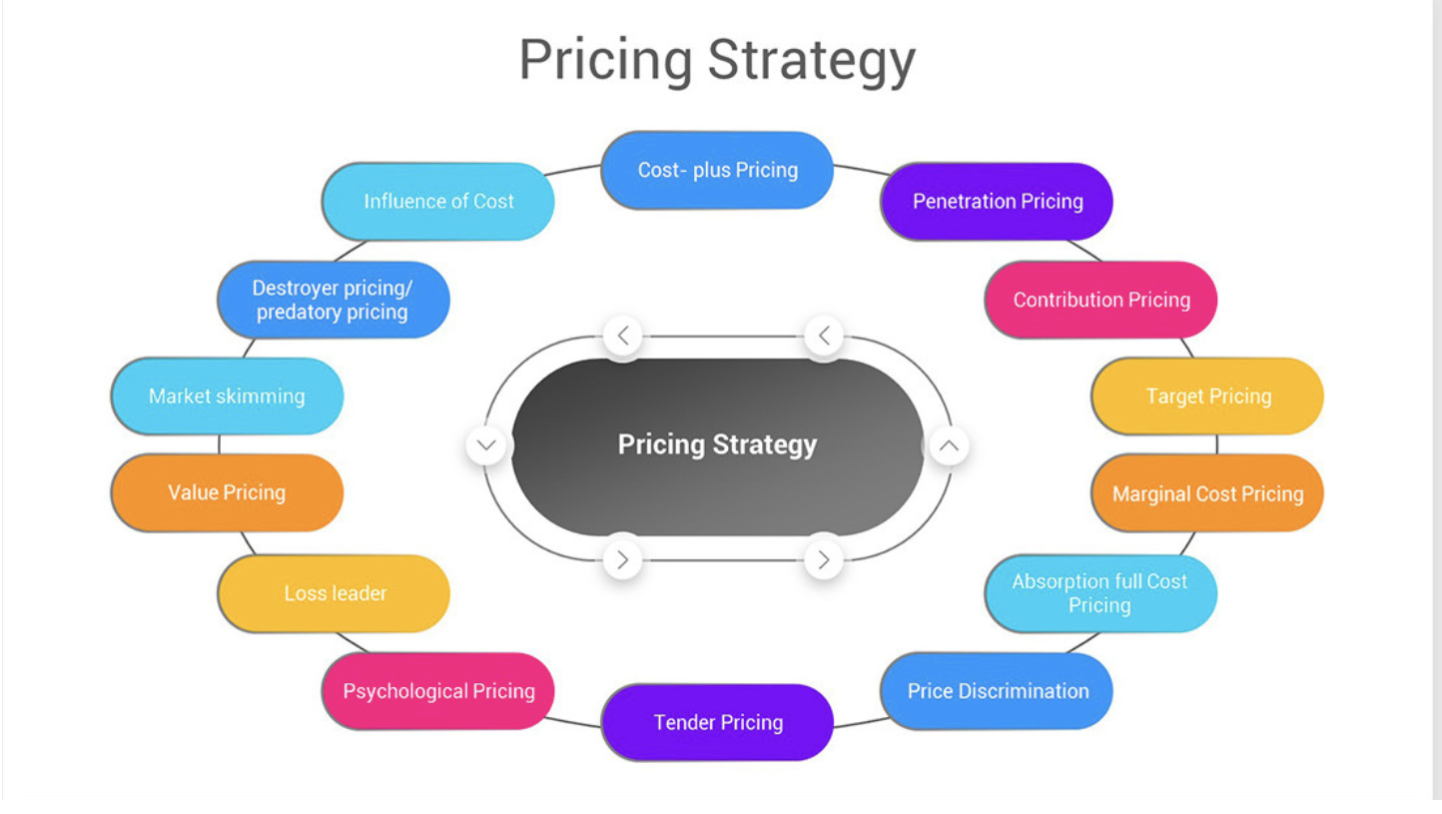Producing a Dynamic Pricing Strategy to Keep Ahead of the Competitors
Producing a Dynamic Pricing Strategy to Keep Ahead of the Competitors
Blog Article
Comprehending Prices Strategies: A Guide to Boosting Competition
In a significantly affordable landscape, understanding prices strategies is vital for companies intending to boost their market setting. Understanding rival rates and the mental elements that influence consumer habits can produce a nuanced method to prices that resonates with target audiences.
Value of Pricing Strategies
In the competitive landscape of service, the relevance of rates techniques can not be overemphasized. Prices offers as an important bar for services, influencing both market positioning and consumer perception. A distinct rates strategy can boost productivity, drive sales, and establish an one-upmanship.

Recognizing customer habits is crucial in crafting rates approaches. Insights right into cost sensitivity, perceived worth, and competitive offerings allow businesses to adjust their rates models accordingly. In addition, regular assessment of prices performance is required to react to market dynamics and customer trends.
Ultimately, a robust prices method is important not just for revenue generation yet additionally for long-term company viability. It forms brand name identification, affects consumer loyalty, and plays an essential function in the total advertising method. Because of this, services should spend time and sources in establishing and refining their pricing approaches to flourish in an ever-evolving marketplace.
Sorts Of Rates Models
Exactly how do companies determine one of the most efficient method to price their product and services? The response lies in comprehending various prices models, each suited to different market problems and service objectives.
One widespread model is cost-plus prices, where a set percent is contributed to the complete cost of production. This approach ensures that all expenses are covered while generating an earnings. Conversely, value-based pricing concentrates on the regarded worth of the product to the customer, enabling companies to charge a premium based on consumer demand and contentment.
One more technique is vibrant pricing, typically utilized in markets such as travel and hospitality. This model readjusts costs in real-time based upon market demand, rival rates, and various other external variables. Infiltration prices is also substantial, where organizations originally set reduced rates to go into an open market and gain market share, later on boosting costs as soon as a customer base is established.
Lastly, skimming rates involves setting high preliminary prices for brand-new or cutting-edge products, profiting from very early adopters prior to lowering rates in time. Understanding these versions makes it possible for organizations to strategically position themselves in the market, straightening their prices approaches with their overarching goals.

Studying Rival Prices
Understanding competitor prices is an essential aspect of formulating an effective pricing approach. Organizations has to perform detailed evaluations of their competitors' rates frameworks to determine market positioning, examine prospective threats, and discover chances for differentiation. This involves gathering information on competitors' rates, advertising techniques, and any type of discounts or rewards they use.
Analyze their pricing models, including any tiered prices systems, membership charges, or mass discounts - Pricing Strategy. Recognizing the reasoning behind these pricing approaches can give insights right into customer actions and preferences.
It is additionally crucial to check adjustments in competitor rates consistently. Market characteristics can move swiftly, and staying notified permits businesses to change browse around these guys their strategies proactively. Consider the effects of competitor prices on your value proposal. If rivals provide comparable products at reduced rates, you might require to highlight special marketing points or enhance client solution to warrant your pricing.
Inevitably, evaluating competitor pricing not only informs pricing decisions however also helps companies stay affordable in a frequently advancing market landscape.
Emotional Rates Strategies
Mental prices techniques leverage consumer psychology to affect purchasing choices and enhance the regarded value of products. These strategies are based in the understanding of how customers refine pricing details and the emotional feedbacks that accompany it. One usual technique is charm prices, where prices are established simply listed below a rounded number, such as $9.99 rather than $10.00. This method exploits the tendency of consumers to perceive rates as less than they really are, motivating impulse purchases.
One more effective technique is stature prices, where higher costs are linked with greater quality. This approach allures to customers' desire site web for status and exclusivity, placing items as exceptional offerings. Additionally, packing products together at a reduced rate can develop a feeling of worth, motivating consumers to buy even more than they originally planned.
Deficiency rates, which emphasizes limited availability or time-sensitive offers, can additionally set off seriousness, pushing consumers to act quickly. By recognizing and using these mental pricing strategies, services can efficiently shape consumer understandings, drive sales, and ultimately boost competitiveness in the marketplace.
Implementing and Readjusting Approaches

As soon as information is gathered, businesses should assess their rates versions against present market conditions. This may involve taking on dynamic prices techniques that enable for real-time adjustments based upon supply and need changes. Organizations ought to likewise take into consideration segmenting their market to tailor costs for various client teams, boosting perceived worth and driving sales.
Frequently reviewing rates techniques is crucial. This can be achieved with A/B testing or consumer feedback, which offers understandings right into the effectiveness of existing pricing. Furthermore, services need to remain flexible to adapt to unforeseen modifications, such as economic slumps or arising competitors.
Final Thought
Finally, reliable rates strategies serve as a crucial internet component for companies aiming to improve competitiveness in a rising and fall market. By leveraging different prices designs, examining rival rates, and utilizing psychological methods, firms can much better place themselves and interact worth to consumers. Additionally, regularly readjusting these methods in feedback to market characteristics and customer behavior is essential for guaranteeing long-term sustainability and profitability, eventually driving sales and fostering client loyalty.
In a significantly affordable landscape, grasping pricing methods is essential for services intending to boost their market setting. Recognizing competitor rates and the psychological elements that influence consumer habits can create a nuanced method to rates that resonates with target audiences.Recognizing competitor prices is an essential aspect of developing a reliable pricing method. Assess their pricing designs, including any kind of tiered pricing systems, membership costs, or mass discounts. By leveraging different prices models, evaluating rival pricing, and using emotional strategies, companies can much better place themselves and interact value to customers.
Report this page